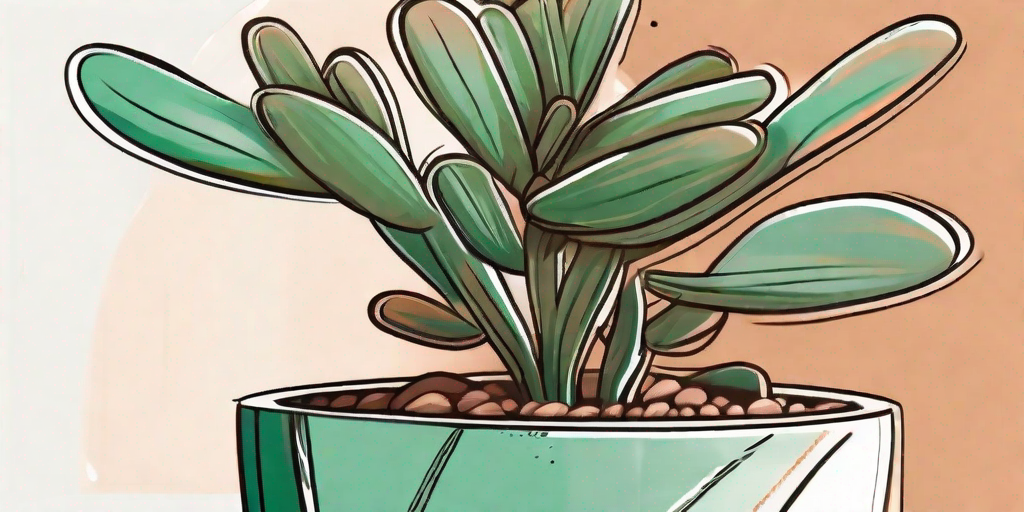
The Coppertone Sedum, also known as Sedum nussbaumerianum, is a charming succulent that adds a splash of color to any garden or indoor space. Its copper-colored leaves, which give it its name, are a sight to behold, especially when kissed by the sun. But how do you care for this sun-loving plant? Let's dive into the world of succulents and find out!
Understanding Your Coppertone Sedum
The Basics
The Coppertone Sedum is a perennial plant native to Mexico. It's a member of the Crassulaceae family, which includes over 600 species of succulents. Known for its rosette shape and coppery leaves, this succulent is a favorite among plant enthusiasts for its low maintenance requirements and aesthetic appeal.
One of the unique features of the Coppertone Sedum is its ability to change color based on the amount of sunlight it receives. In the shade, its leaves are a soft green color. However, when exposed to full sun, the leaves take on a beautiful copper hue, hence the name Coppertone.
Size and Growth
The Coppertone Sedum is a fast-growing succulent that can reach up to 8 inches in height and spread up to 2 feet wide. It's a perfect choice for ground cover or for adding a pop of color to rock gardens. It also makes a great addition to hanging baskets, thanks to its trailing growth habit.
During the spring and summer, the Coppertone Sedum produces small, star-shaped white flowers that add to its charm. These flowers attract bees and butterflies, making it a great choice for a pollinator garden.
Caring for Your Coppertone Sedum
Light Requirements
As a sun-loving succulent, the Coppertone Sedum thrives in bright light. It needs at least 6 hours of sunlight each day to maintain its vibrant copper color. If you're growing it indoors, place it near a south-facing window to ensure it gets enough light.
While it loves the sun, the Coppertone Sedum can get sunburned if exposed to intense afternoon sun. To prevent this, provide some shade during the hottest part of the day or gradually acclimate it to full sun.
Watering and Feeding
Like most succulents, the Coppertone Sedum is drought-tolerant and prefers a 'soak and dry' watering method. This means you should water it thoroughly, then allow the soil to dry out completely before watering again. Overwatering can lead to root rot, which is a common problem for succulents.
During the growing season (spring and summer), you can feed your Coppertone Sedum with a diluted succulent fertilizer to promote growth. However, it's not necessary to feed it during the dormant season (fall and winter).
Soil and Potting
The Coppertone Sedum prefers well-draining soil to prevent waterlogging. A cactus or succulent mix is ideal, but you can also make your own by mixing regular potting soil with coarse sand or perlite.
When it comes to potting, choose a container with drainage holes to allow excess water to escape. A terra cotta pot is a great choice as it absorbs moisture, helping to prevent overwatering.
Common Problems and Solutions
Overwatering
Overwatering is the number one killer of succulents, and the Coppertone Sedum is no exception. If the leaves of your plant become mushy and discolored, it's a sign of overwatering. To save your plant, reduce watering and ensure the soil is completely dry before watering again.
Underwatering
While the Coppertone Sedum is drought-tolerant, it can still suffer from underwatering. If the leaves start to shrivel and lose their plumpness, it's a sign that your plant needs water. Remember the 'soak and dry' method and give your plant a good drink.
Pests
Common pests that can bother your Coppertone Sedum include mealybugs, aphids, and spider mites. If you notice small, cotton-like spots on your plant or tiny bugs crawling around, it's time to take action. You can treat these pests with a mixture of water and mild dish soap or use a commercial insecticide.
Frequently Asked Questions
Why are the leaves of my Coppertone Sedum falling off?
Leaf drop is a common issue with succulents and can be caused by a variety of factors. Overwatering, temperature stress, and insufficient light are the most common culprits. Check your care routine and make sure your plant is getting the right amount of water and light.
Can I propagate my Coppertone Sedum?
Absolutely! The Coppertone Sedum is easy to propagate from leaf or stem cuttings. Simply take a cutting, let it dry for a few days to form a callus, then place it on well-draining soil. Keep the soil slightly moist, and in a few weeks, you should see new growth.
Is the Coppertone Sedum toxic?
While the Coppertone Sedum is not known to be toxic to humans, it can cause stomach upset if ingested. It's also not safe for pets, so keep it out of reach of curious cats and dogs.
In conclusion, the Coppertone Sedum is a delightful succulent that adds a touch of color to any space. With the right care, it will reward you with its vibrant coppery leaves and charming white flowers. So why not add a Coppertone Sedum to your plant collection? You won't regret it!















